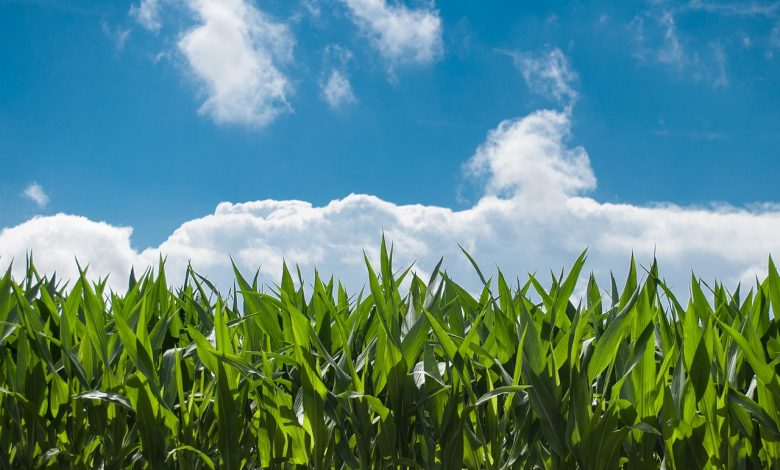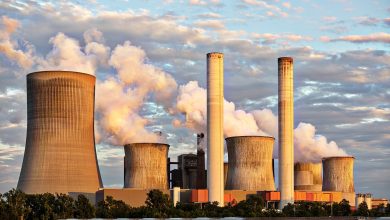Plant Power: How Effective Are Biofuels?

There’s no denying that energy consumption is one of the biggest stories of our time, set to be one of the defining issues facing humanity throughout the next century. As the impact of climate change and economic, environmental, and efficiency limits of traditional fuel sources become more apparent, governments, companies, and consumers alike are looking for alternatives. Fuels from plants – commonly known as biofuels – have emerged, meanwhile, as one of the leading candidates in the race to develop new energy sources. However, even so, science and realism must mitigate optimism. While there are certainly reasons for intrigue, there are also some cautionary signs that demonstrate biofuels may not be the next wave of the future – or, even if they are, that there’s still more work to be done in the present before that future becomes viable.
An Overview of Biofuels
“Biofuels” is an umbrella term used to describe different types of fuels that are produced by extracting naturally-occurring oils from plants. The materials from which these oils are extracted, meanwhile, are referred to as biomass or feedstock. A biofuel such as ethanol, for example, is a type of fermented alcohol, extracted from feedstocks such as sugar cane and corn. Subdivided into three main categories, biofuels are specifically defined by the type of feedstock used in their production. First generation biofuels make use of food crops, like the sugar cane and corn used to produce ethanol. Biodiesels – which are used to power diesel engines normally powered by gasoline-based diesel – are extracted from crops such as soybeans and canola. Second generation biofuels, also referred to as cellulosic biofuels, are produced from the cellulose present in plants. Because cellulose is much harder to break down than the materials used in first generation biofuels, these types of biofuels require a pretreatment phase before they are able to proceed to fermentation and extraction. Second generation biofuels are made from things such as grass, wood, and parts of plants that are inedible but rich in cellulose. Third generation biofuels, lastly, are a specific type of biofuel made from the lipids produced by algae, while the United States Department of Energy is working separately on developing hydrocarbon biofuels (also known as “drop-in fuels”), which are specifically designed to work with existing engines.
The Pros of Biofuels
The first and arguably biggest driving factor in the excitement around biofuels is the fact that they are, at present, the only fuel that can be used in most existing combustion engines previously designed to operate with petroleum-based fuels. They can either be added to gasoline or replace gasoline completely in conjunction with engines designed to operate with petrol. This is what makes them one of the most attractive possibilities for replacing gasoline – allowing users to continue using the same vehicles they do now, without switching to another vehicle or type of engine as they would have to do in order to use electric power. While the renewability of biofuels has been called into question, there is no doubt that they are still far more renewable than fossil fuels, which take millions of years to form and are thus, for practical purposes, nonrenewable. Petroleum cannot last forever, whereas the crops needed for biofuels can be replanted and cultivated in a far more sustainable fashion. There is also evidence to suggest that biofuels may be less expensive to produce than traditional fuel sources. This is made possible, in large part, due to decreased oil reserves, as well as the potential for locality in biofuel production. While oil can only or mainly be extracted from certain oil-rich areas, biofuels – because they are made from renewable crops that can be planted in a wide variety of places – can, in theory, be produced almost anywhere. This could also cut down on the necessary costs, as well as potential political entanglements acquired when drilling for or refining oil in foreign countries such as Saudi Arabia. It could also mean an economic boost for agricultural areas, especially those that are struggling economically that could use the fresh subsidies and demand for their produce. Additionally, due to the natural laws of supply and demand, if fuel is made more accessible due to an increased biofuel supply, the price may also decrease, benefiting consumers who are tired of paying ever-rising prices at gas stations.
Biofuels can work with current engine designs, helping prolong current vehicle usage and making the switch from petroleum to more renewable, eco-friendly sources of energy easier. One of the biggest obstacles toward achieving the switch to cleaner solutions – outside biofuels – is cost, as consumers may understandably not be eager about the prospect of having to pay hundreds or thousands of dollars for a new engine or for an eco-friendly vehicle. Meanwhile, many may not even be financially able to do so. For consumers, being able to use the same engine as they are right now while simply switching to a different fuel source – and one which may cost less at that – could be a powerful motivator in helping spur biofuels as an eco-friendly fuel source. The case for their eco-friendliness comes from the fact that they emit less carbon and fewer toxins than their petroleum counterparts, with studies at one time even showing that biofuels could have the potential to lower greenhouse emissions by as much as 86% (DOE).
The Cons of Biofuels
While biofuels have raised optimism and enthusiasm from eco-warriors and governments alike, recent years have also seen several cautionary signs demonstrating that the benefits of biofuels may be less than initially hoped. They may potentially be less sustainable than first imagined, due in part to the fact that the production of biofuels requires more farmland to be devoted to crops for that purpose. Clearing land for farming may mean more deforestation – an ecological nightmare – worsening existing environmental crises and even potentially creating new ones. The issues stemming from deforestation range from pollution to the loss of habitats for animals, and while those problems are not particular to biofuels, they may nevertheless be exacerbated by them. While biofuels are undoubtedly more sustainable and eco-friendly compared to fossil fuels, they also may not be quite as valuable in both of those respects as previously thought – at least not in their current forms. This is partially due to the fact that, while biofuels emit less carbon and contain fewer toxins (thus making them cleaner to burn than fossil fuels), they are still industrial products and thus produce at least some measure of industrial waste. A huge reason for switching to biofuels is their ability to cut down on carbon emissions, but the machinery needed to cultivate and extract the materials used to make them are often powered by other engines that still emit carbon.
In regards to farmland, cultivating the same crops over and over again for use in biofuels can be detrimental. While producing crops for biofuels may offer financial stability for farmers, most types of soil and farmland benefit from crop rotation from year to year. Growing the same crops year after year for use in biofuels can sap those soils of their naturally-occurring nutrients, making the land less fertile over time and ultimately posing an ever bigger problem for farmers who rely on those plots of land for their livelihood. There is also concern that the amount of water used to create biofuels can become problematic in areas where water is already limited. Meanwhile, the danger of those same water sources becoming contaminated due to the extraction process – which can make use of everything from fertilizers to herbicides and pesticides, none of which are desirable for supplies of drinkable water – could be another detrimental side effect of using farmland expressly for biofuel production. Add to that the fact that, while one of the potential selling points of biofuels is that they can be more affordable at the pump, the equipment needed to refine them is still being developed and can be more costly initially than their traditional oil refining counterparts. Lastly, devoting more land to biofuels may mean doing so at the cost of using that land for edible crops. In certain places already ravished by shortages of food, cutting that food supply further by giving up some of the land and crops for fuel production could have dire consequences. What’s more, doing so could also have unintended economic repercussions. Potential price increases in items made more scarce by their increased use in biofuel production could create inflation that could damage local economies. This is especially problematic for first generation biofuels, which primarily or exclusively make use of edible crops.
The Rise and Fall of Ethanol
The most well-known biofuel to the general public is ethanol. When it first gained popularity, it embodied many of the hopes that remain strong in some circles about the efficacy and efficiency of biofuels. Because ethanol can be used on its own or as a blending agent with petroleum gasoline, it can help cut down on carbon emissions. E10, for example, is a blend of ten percent ethanol and 90 percent gasoline, while E85 is a blend containing around 85 percent ethanol. These factors, combined with its other benefits, raised high hopes for ethanol among everyone from environmental advocates to those concerned with national security hoping to find a solution that would reduce America’s dependence on foreign oil.
Proving popular, ethanol has seen a great deal of usage with around 97 percent of gasoline used in the United States already containing some degree of ethanol. However, as time has passed, ethanol has also come to embody some of the more negative things associated with biofuels as well. Scientists from the University of Michigan have questioned how much ethanol is able to cut down on our carbon emissions. According to Joe DeCicco, a research professor at the University of Michigan Energy Institute, the combination of the carbon emitted by ethanol along with that used to refine it may actually make carbon emissions worse (Henderson, 2016). The cons associated with ethanol have also become more pronounced in recent years, particularly in light of reports that there may not be enough agricultural land in the United States to grow enough corn and other crops to both sustain food production and serve as biofuel sources. This problem is not limited to America either, as there are concerns that the issue of balance between biofuel and food production may be global, the implication of which would be the preponderance of huge sustainability issues.
The Future of Biofuels
DeCicco characterized biofuels as “a false solution” in his 2016 report. However, he asserts that emissions must be reduced, which still remains the focus of biofuel development. Though there have certainly been hitches along the way, some of the concepts behind biofuels – especially their increased renewability and sustainability compared to fossil fuels – remain important stepping stones toward developing cleaner, more efficient energy. Third generation algae-based biofuels, for example, have shown signs of being able to address some of the issues raised by first generation fuels like ethanol (Scheer & Moss, 2013). The fact that algae is not grown as a food crop, for one, helps address certain sustainability issues, as utilizing algae instead of crops such as sugar cane and corn would reduce the potential for biofuel production to cut into food supply. In addition, algae could solve the issue of finding enough space for growing the biomass necessary for producing biofuels.
Algae would not likely require deforestation either in the same way that planting more corn or sugarcane for use in ethanol would. Meanwhile, there is evidence to suggest that algae could yield far more fuel per unit than second generation crops, while algae-based biofuels may be cleaner and more eco-friendly than first and second generation options. In addition to algae, some have proposed other bio-based fuel molecular mixtures, such as hydroxymethylfurfural (HMF), which may then (in theory) be produced to make dimethylfuran (DMF), which can also produce more energy than fuels such as ethanol. Chemical engineer James Dumesic at the University of Wisconsin–Madison states that “DMF has the energy density of petroleum.” He argues that DMF could replace ethanol, not just because it provides a greater amount of energy, but also because of its efficiency (Scientific American, 2007).
Biofuels have been a source of hope and contention for more than a decade, and the future of biofuels remains as full of potential and problems alike as ever. However, with the need for new energy sources growing ever greater, so too does the incentive to cultivate and refine our understanding of the pros and cons posed by biofuels.
Sources
DOE. (Unknown). “Biofuels & Greenhouse Gas Emissions: Myths versus Facts.” United States Department of Energy.
Henderson, S. (2016). “The Effectiveness of Biofuels and Green Technology Policy.” Detroit Today.
Scheer, R. & Moss, D. (2013). “Now That the Ethanol Enthusiasm Bubble Has Burst, Is There Hope for Other Biofuels?” Scientific American.
Scientific American. (2007). “SciAm 50: Fueling Alternatives.” Scientific American.



